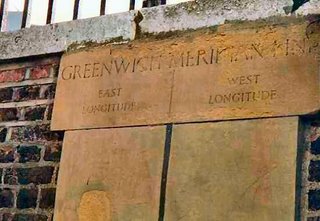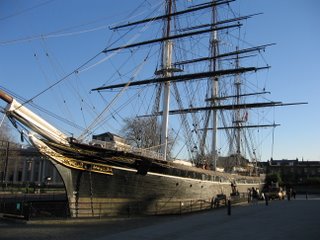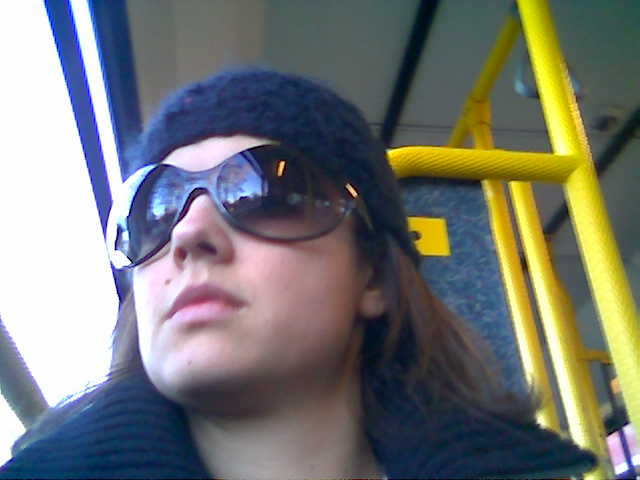Greenwich Observatory
Greenwich Observatory was set up by King Charles II in 1675 to study means of fixing longitude, and became the acknowledged world authority on the subject. An International Meridian Conference was convened at Washington in 1884 and the delegates recommended to their respective governments that Greenwich should be adopted as the prime meridian. The French, for political reasons, said that they would only accept Greenwich as the prime meridian if Great Britain adopted the metric system. Over the following years the various governments adopted Greenwich officially as prime meridian, with only France going its own way. A bill was passed eventually in 1911 but stayed on the statute books until 1978 when France adopted Universal Time.
 In the courtyard of the Observatory, and just outside, are brass strips set in the ground and walls marking the exact site of the line of the meridian. It is therefore possible to stand astride the line, with a foot in each hemisphere; a favourite tourist occupation.
In the courtyard of the Observatory, and just outside, are brass strips set in the ground and walls marking the exact site of the line of the meridian. It is therefore possible to stand astride the line, with a foot in each hemisphere; a favourite tourist occupation.Cutty Sark
The Cutty Sark is the most famous tea clipper built, and is the only one to survive. She is now in dry dock at Greenwich.By 1895, she was again losing money for her owner and was sold to the Portuguese as the Ferreira, although interestingly enough her crews called her Pequina Camisola ('little shirt'). She was worked by her new owners between Oporto, Rio, and Lisbon for over thirty years until 1920, when she was sold again, this time becoming the Maria do Amparo. In 1922 she underwent a refit in the Surrey Docks, London, and was driven to shelter from a storm in Falmouth harbour on her way home. A Captain Wilfred Dowman saw her there, and bought her from the Portuguese owners, returning her to British ownership again.

Greenwich Park
Greenwich Park has perhaps the finest site in East London: a great loop of the Thames to the north, a fine wooded hill to the south and a small river to the west. The The Celts lived here, the Romans built a temple on top of the hill. A palace in the Middle Ages and it became a Royal Palace. Then the park was enclosed. At first it was a hunting park. Today it is by far the most popular park in South East London.


No comments:
Post a Comment